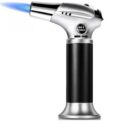
How to Choose The Good Best of Wine for Any Occasion
Choosing the right wine can be a fun experience, whether for a special occasion, a casual dinner, or to unwind after a long day. Yet, with the vast array of options available, the process can also be overwhelming. From navigating wine shops to understanding labels, selecting a quality wine that suits your taste and budget requires some knowledge and tips. In this article, we’ll explore how to select good wine, focusing on Singapore wines, affordable wine options, and what to look for when.
Understanding Your Preferences
The first step in selecting good wine is understanding your taste preferences. Wine comes in different styles, including red, white, rosé, and sparkling, each with its unique profile. For example, red wines are often richer, with flavours from fruity to earthy.
White wines tend to be lighter and crisper, with notes that can be citrusy, floral, or buttery. Rosé wines balance the two, and sparkling wines are bubbly and refreshing, often associated with celebrations. To discover what you enjoy, consider trying wines from different areas and styles. Singapore’s wine market offers a diverse selection, with Singapore wines available from both local producers and international sources.
Visiting wine shops with knowledgeable staff can help you explore different varieties and identify what you like best. Don’t hesitate to ask for recommendations based on your taste preferences and the occasion.
Reading Wine Labels
Wine labels can provide a wealth of information if you know how to interpret them. Key details to look for include the grape variety, the region where the wine was produced, and the vintage year. The grape variety (such as Cabernet Sauvignon, Chardonnay, or Merlot) gives you an idea of the wine’s flavour profile. The region, whether it’s Bordeaux, Napa Valley, or a local vineyard producing Singapore wines, can influence the wine’s characteristics based on climate, soil, and winemaking traditions.
The vintage year indicates the year the grapes were harvested. While older wines are often associated with higher quality, some wines are meant to be enjoyed young, while others improve with age.
Consider the wine’s type and region when assessing its vintage. For example, a recent vintage of a New World wine (such as those from Australia or Chile) might be just as enjoyable as an older vintage from a traditional wine-producing region.
Choosing Affordable Wine
Finding affordable wine that doesn’t compromise on quality is entirely possible with research and experimentation. Price is not always an indicator of quality; many excellent wines are available at reasonable prices.
When looking for affordable options, consider wines from lesser-known regions or producers. These wines often offer great value because they are not as heavily marketed or in demand as those from famous wine regions.
Wine shops in Singapore offer a variety of price points, and many have knowledgeable staff who can guide you to good quality, affordable wine options. Look for shops that host tastings or have a selection of wines available by the glass, so you can try them before you buy. Additionally, online wine retailers often offer discounts and promotions, making it easier to find a bargain.
Pairing Wine with Food
Another important factor in selecting good wine is how well it pairs with food. The right wine can enhance a meal, bringing out the flavours of the dish and creating a harmonious dining experience. A classic rule of thumb is to match the weight of the wine with the weight of the food. For instance, a full-bodied red wine like Cabernet Sauvignon works well with rich, hearty dishes such as steak or lamb, while a light, crisp white wine like Sauvignon Blanc matches salads or seafood.
For Asian cuisine, which is popular in Singapore, consider wines that can balance spices. A slightly sweet Riesling or a fruity Pinot Noir can pair wonderfully with dishes that have a bit of heat. When in doubt, ask for pairing suggestions at your local wine shops, where staff can recommend wines that suit the cuisine you plan to serve.
Paying Attention to Storage and Serving
Once you’ve selected your wine, proper storage and serving are key to ensuring it tastes its best. Store your wine in a cool, dark place, ideally between 12-18°C. This helps preserve the wine’s flavours and prevents it from ageing prematurely. If you plan to keep the wine for an extended period, consider investing in a wine cooler or cellar.
When it comes to serving, the temperature of the wine can significantly impact its taste. Red wines are generally best served slightly below room temperature (around 15-18°C), while white and sparkling wines are typically served chilled (7-10°C).
Using the right glassware can also enhance your wine-drinking experience. For example, red wines are often served in larger, rounder glasses to allow the wine to breathe, while white wines are served in narrower glasses to maintain their crispness.
With time and experience, you’ll develop a palate for what you truly enjoy, making wine selection a pleasurable and rewarding experience. Get started with Wine Trade Asia Pte Ltd.











